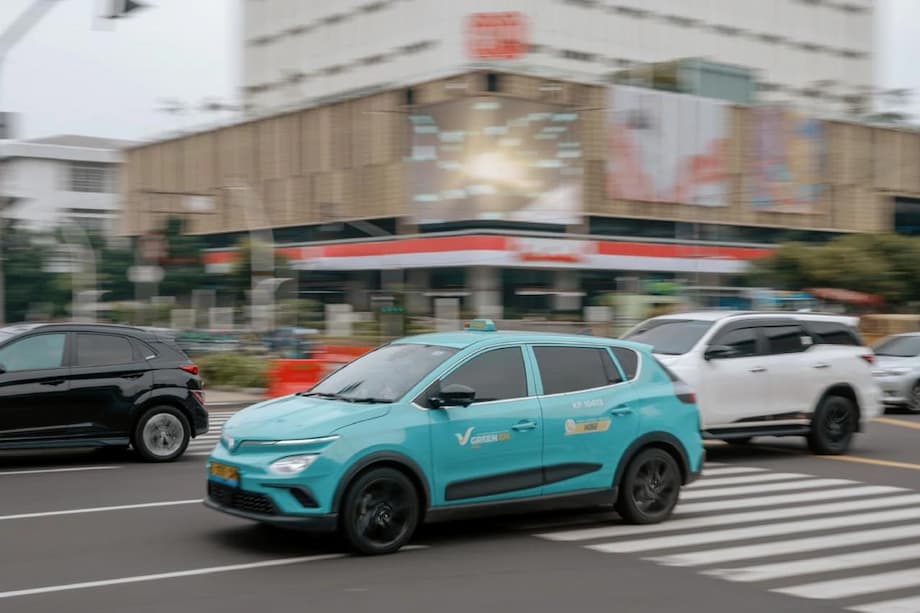Vietnam’s GSM Taxi Firm Takes on Grab: The Rise of Electric Mobility in Southeast Asia
In a region long dominated by ride-hailing giants like Grab and Gojek, a new challenger has emerged from Vietnam, promising not just competition but a revolution in how Southeast Asia moves. Green & Smart Mobility (GSM), the brainchild of Vietnam’s richest man, Pham Nhat Vuong, is rapidly expanding its electric taxi fleet across the region, aiming to disrupt the status quo and accelerate the adoption of sustainable transport. As GSM’s teal-colored electric vehicles (EVs) roll into cities from Hanoi to Manila, the company’s ambitions and the challenges it faces are coming into sharp focus.
- Vietnam’s GSM Taxi Firm Takes on Grab: The Rise of Electric Mobility in Southeast Asia
- Who Is Behind GSM and What Is the Vision?
- How GSM Is Expanding Across Southeast Asia
- What Sets GSM Apart from Other Ride-Hailing Firms?
- Challenges and Risks: Can GSM Sustain Its Growth?
- The Broader Impact: Driving Southeast Asia’s Green Mobility Revolution
- In Summary
Who Is Behind GSM and What Is the Vision?
GSM is not just another ride-hailing startup. It is a strategic extension of Vingroup, Vietnam’s largest conglomerate, and its EV manufacturing arm, VinFast. Pham Nhat Vuong, who holds a 95% stake in GSM, sees the taxi company as both a business opportunity and a powerful marketing tool to propel VinFast into a global EV brand. By putting thousands of VinFast vehicles on the road as taxis, GSM showcases the reliability and appeal of Vietnamese-made EVs to millions of potential customers across Asia.
Nguyen Van Thanh, GSM’s global chief executive, describes the company’s mission as a “Go Green Global” journey, aiming to transform traditional mobility into a cleaner, smarter, and more socially responsible future. GSM’s approach is customer-centric, emphasizing 5-star service standards, professional drivers, and transparent pricing. The company’s rapid growth in Vietnam—where it captured up to 40% of the ride-hailing market within its first year—demonstrates both the demand for sustainable transport and the effectiveness of its aggressive expansion strategy.
How GSM Is Expanding Across Southeast Asia
GSM’s expansion is nothing short of ambitious. After establishing itself in Vietnam, the company has launched operations in Laos, Indonesia, and the Philippines, with plans to enter India and other Asian markets. Each new market presents unique challenges and opportunities, but GSM’s playbook remains consistent: deploy a fleet of VinFast electric vehicles, offer competitive pricing, and deliver a premium service experience.
Laos: Pioneering Green Mobility
Laos was GSM’s first international foray, with the launch of Xanh SM (the local brand name) in Vientiane in late 2023. The initial fleet of VinFast VF 5 Plus electric cars is set to expand to 1,000 vehicles, serving not just the capital but also tourist destinations like Luang Prabang and Vang Vieng. GSM’s entry into Laos aligns with the country’s goal of making 30% of its vehicles electric by 2023, supported by government incentives and a growing network of public charging stations.
GSM faces competition from local players like Loca and international entrants such as South Korea’s Kakao Mobility. However, GSM’s focus on premium service, job creation, and the development of a green mobility ecosystem—including EV leases and package rentals—positions it as a catalyst for broader EV adoption in Laos.
Philippines: Setting a New Standard for Urban Transport
In June 2025, GSM officially launched Green GSM, the Philippines’ first all-electric taxi service, in Metro Manila. The company deployed an initial batch of 500 VinFast Nerio Green vehicles, with plans to invest $1 billion over three years and expand the fleet to thousands of units. The launch was attended by senior Philippine officials and quickly captured public attention, with the Green GSM app topping the local download charts within days.
Green GSM’s vehicles are equipped with advanced safety features, including the Secure to Safe (S2S) monitoring system, which uses AI-assisted video monitoring and encrypted data management to enhance passenger security. The service operates in 10 out of 16 cities in Metro Manila, offering transparent pricing, real-time ride tracking, and a promotional rewards program to attract new users.
Nguyen Van Thanh, GSM’s CEO, emphasized the company’s commitment to “continuous innovation, improving service quality, and expanding our electric vehicle network to help build a sustainable and environmentally friendly transportation ecosystem that best serves the people.” Early feedback from Filipino riders and drivers has been positive, highlighting the quiet ride, clean cabin environment, and the absence of fuel expenses as key advantages.
Indonesia: Entering a Crowded Market
Indonesia, Southeast Asia’s largest economy, presents both the biggest opportunity and the toughest competition for GSM. The company aims to have 10,000 of its cyan-colored EV taxis on Indonesian streets by the end of 2025, targeting a 6% market share by 2026 and potentially 12% by 2027 if the fleet grows to 35,000 vehicles. This would put GSM on par with its current scale in Vietnam.
However, Indonesia’s ride-hailing market is fiercely contested by established players like Grab, Gojek (owned by GoTo Group), and Blue Bird Tbk. Analysts from Maybank Securities suggest that GSM’s entry could reduce Grab and GoTo’s on-demand service sales by 1% and 3% respectively by 2027. Blue Bird’s CEO welcomed GSM’s arrival as a “catalyst for innovation,” while GoTo’s CEO acknowledged GSM’s competitiveness. Grab, for its part, has not commented publicly on the new competition.
Despite these ambitions, GSM’s fleet remains much smaller than those of Grab and Gojek, which collectively operate millions of vehicles across Southeast Asia. Analysts caution that GSM’s push into Indonesia, while significant, is unlikely to pose an existential threat to the incumbents in the near term. GoTo’s recent withdrawal from other countries, including Thailand and Vietnam, underscores the challenges of cross-border expansion in this sector.
What Sets GSM Apart from Other Ride-Hailing Firms?
GSM’s unique selling proposition lies in its exclusive use of electric vehicles and its integration with VinFast’s manufacturing capabilities. By operating a 100% EV fleet, GSM not only reduces emissions but also positions itself as a leader in sustainable urban mobility. The company’s vehicles are equipped with advanced safety and monitoring systems, and drivers undergo rigorous training in both road safety and customer service.
GSM’s aggressive pricing strategy, enabled by Pham Nhat Vuong’s deep financial resources, allows it to compete effectively with established players. The company also leverages technology to enhance the user experience, offering a seamless app-based booking system, transparent fare structures, and real-time ride tracking. Promotional offers, such as Green Points for new users in the Philippines, further incentivize adoption.
Perhaps most importantly, GSM’s expansion serves as a showcase for VinFast’s EVs, helping to build brand recognition and consumer trust in markets where electric vehicles are still a novelty. By putting thousands of VinFast cars on the road as taxis, GSM provides a real-world demonstration of their reliability, comfort, and cost-effectiveness.
Challenges and Risks: Can GSM Sustain Its Growth?
Despite its rapid rise, GSM faces significant hurdles as it seeks to scale across Southeast Asia. The ride-hailing industry is notorious for thin profit margins, high operational costs, and intense competition. Building and maintaining a large EV fleet requires substantial capital investment, not just in vehicles but also in charging infrastructure, maintenance, and driver training.
In many markets, regulatory uncertainty and fragmented transportation policies can slow expansion. For example, local taxi unions and traditional operators may resist the entry of new players, especially those using disruptive technology or business models. GSM must also navigate the logistical challenges of operating in diverse urban environments, from the congested streets of Manila to the sprawling cities of Indonesia.
Another key challenge is consumer adoption. While there is growing interest in sustainable transport, many Southeast Asian consumers remain price-sensitive and may be hesitant to switch from established platforms. GSM’s early success in Vietnam and the Philippines suggests that there is demand for clean, safe, and modern mobility solutions, but sustaining this momentum will require ongoing investment in service quality and customer engagement.
The Broader Impact: Driving Southeast Asia’s Green Mobility Revolution
GSM’s expansion is more than a business story—it is a reflection of broader trends shaping Southeast Asia’s future. Governments across the region are setting ambitious targets for electric vehicle adoption, driven by concerns over air pollution, energy security, and climate change. By providing a scalable model for electric mobility, GSM is helping to accelerate this transition and set new standards for the industry.
In Laos, GSM’s entry supports the government’s goal of electrifying 30% of the vehicle fleet, while in the Philippines, the company’s partnership with local authorities aligns with efforts to modernize urban transport and reduce emissions. In Indonesia, GSM’s presence is prompting established players to innovate and invest in their own green mobility solutions.
As GSM continues to expand, it is likely to face both resistance and imitation from competitors. However, its success to date demonstrates the potential for homegrown Southeast Asian companies to lead the region’s shift toward sustainable, tech-enabled transportation. The company’s journey also highlights the importance of visionary leadership, strategic partnerships, and a willingness to invest in long-term growth over short-term profits.
In Summary
- GSM, backed by Vietnam’s richest man Pham Nhat Vuong, is rapidly expanding its electric taxi fleet across Southeast Asia, challenging established ride-hailing giants like Grab and Gojek.
- The company operates exclusively with VinFast electric vehicles, offering premium service, advanced safety features, and aggressive pricing to attract customers.
- GSM has launched operations in Vietnam, Laos, Indonesia, and the Philippines, with plans to enter India and other Asian markets.
- While GSM’s fleet is smaller than those of its main competitors, its focus on sustainability and technology is driving innovation and raising industry standards.
- The company faces significant challenges, including thin margins, regulatory hurdles, and the need for large-scale investment in infrastructure and customer acquisition.
- GSM’s expansion is contributing to Southeast Asia’s broader transition toward green mobility, supporting government goals and inspiring both competition and collaboration in the sector.












